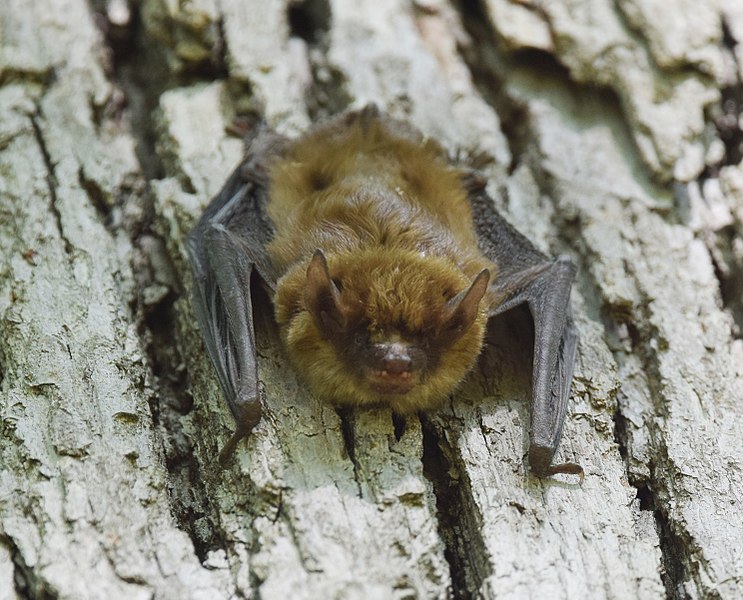“Bat removal costs reflect the specialized techniques and safety measures needed to handle these protected species.”
Bat removal can seem costly, but the price reflects the specialized care and expertise required to safely remove these protected animals. Bats are often shielded by strict wildlife protection laws, which require humane removal methods that prevent harm.
The process also involves extensive inspections, sealing entry points, and ensuring no bats are left behind—all of which require time and skilled labor. Additionally, the health risks associated with bat guano and potential property damage add to the complexity and cost of the removal process.
Legal Protections for Bats
Bats are protected under various state and federal laws in many regions, making their removal more complex and costly. These laws are designed to ensure that bats, which play a critical role in ecosystems by controlling insect populations, are not harmed during removal.
For example, in the United States, several bat species are protected by the Endangered Species Act and local wildlife regulations, which prohibit killing or disturbing bats, especially during certain times of the year, such as maternity season. This legal protection adds layers of regulation to the removal process, requiring licensed professionals who understand how to handle bats within the boundaries of the law.
Due to these protections, bat removal must be conducted using humane methods like exclusion devices, which allow the bats to exit but prevent them from re-entering. The need for these specialized techniques requires expertise and specific equipment that most homeowners don’t possess. Attempting to remove bats without considering these legal restrictions can result in hefty fines or penalties. This legal complexity is one of the key reasons bat removal services tend to be more expensive compared to other wildlife control tasks.
In addition to protecting bats themselves, the laws also aim to preserve bat habitats, further complicating removal efforts. This means that certain areas, like caves or attics where bats roost, may also need to be treated carefully during removal. Professionals have to ensure that they are not only removing the bats but also complying with habitat preservation rules. All of these factors—legal compliance, the need for humane methods, and habitat protection—contribute to the higher costs associated with bat removal.
Related: What do bats hate the most?
Specialized Equipment and Techniques
Exclusion Devices
One of the primary methods for humane bat removal is the use of exclusion devices. These are specialized one-way exits that allow bats to leave their roosting spot but prevent them from re-entering. These devices are typically installed at known entry points after a thorough inspection has been completed. The setup needs to be precise, ensuring that all the bats have a way out, while also preventing any from being trapped inside. Because bats are highly mobile and can fit through small gaps, exclusion devices must be carefully positioned to cover every potential entry.
Exclusion devices come in different forms, from netting to tubes, each designed for specific situations. While they may seem simple, proper installation requires expertise to ensure bats leave safely without disrupting their patterns or violating wildlife laws. Moreover, these devices are temporary and need to be removed after the bats have exited, adding an additional step to the removal process. This careful handling of the bats, along with the need for specialized devices, adds to the overall cost of professional removal services.
Infrared Cameras and Ultrasonic Detectors
Another tool professionals use to inspect bat infestations is infrared cameras and ultrasonic detectors. Bats often hide in hard-to-reach or concealed areas, like attics, walls, or chimneys, making it difficult to assess the full extent of an infestation. Infrared cameras help detect heat signatures from bats in dark or hidden spaces, allowing professionals to identify exactly where bats are roosting without causing disruption. These advanced tools can be expensive and require skilled operators to interpret the data correctly.
In addition to cameras, ultrasonic detectors are used to monitor bat activity. Bats use echolocation to navigate and hunt, and these detectors pick up the high-frequency sounds that bats emit. This technology helps professionals determine when and where bats are active, which is crucial for planning the timing of exclusion. Using such advanced equipment ensures that no bats are missed during removal, but it also adds to the cost due to the specialized skills and technology required.
Personal Protective Equipment (PPE)
Bat removal professionals must wear specialized personal protective equipment (PPE) to safeguard against health risks. Bats carry diseases such as rabies, and their droppings, known as guano, can lead to serious respiratory illnesses like histoplasmosis. To prevent exposure to these hazards, professionals wear full protective gear, including gloves, masks, and suits that prevent direct contact with bats or their waste. In some cases, respiratory equipment may be needed if the guano accumulation is significant.
PPE is essential not only for safety but also for legal liability reasons. Professional bat removers must comply with safety standards that protect both the workers and the homeowners from potential health risks. This careful attention to safety, along with the cost of maintaining and using protective gear, contributes to the higher price of bat removal services. In contrast, DIY removal without proper PPE can result in severe health consequences, further justifying the need for professional expertise.
Labor-Intensive Inspections and Repairs
Bat removal requires a thorough and time-consuming inspection of your home, which is a significant part of the cost. Professionals must examine every nook and cranny, from rooflines to attic spaces, to locate the bats and all potential entry points. This process often involves climbing onto rooftops, navigating tight spaces, and using specialized tools like flashlights, mirrors, and sometimes infrared cameras. Because bats can fit through incredibly small gaps, even the tiniest crack or hole must be identified and addressed, adding to the complexity and duration of the inspection.
Once the bats have been safely excluded, repairs are necessary to ensure they cannot return. This step involves sealing all entry points using durable materials like metal mesh, caulk, or wood. In many cases, professionals will also recommend installing chimney caps, repairing vents, or adding covers to prevent future access. These repairs require skilled labor and careful attention to detail, as any missed entry point could allow the bats to return, undoing the entire removal process. The precision required during both the inspection and repair phases adds to the overall cost of bat removal.
In addition to sealing entry points, bat removal services may also include cleaning and repairing any damage caused by the bats. Bat guano can accumulate in large quantities, leading to structural damage, staining, and health hazards. This cleanup process requires special handling and can involve replacing insulation, fixing wood damage, and ensuring the area is sanitized. The combination of a labor-intensive inspection, necessary repairs, and cleanup is a major contributor to the higher costs associated with professional bat removal services.
Health and Safety Precautions
Health and safety are critical concerns when dealing with a bat infestation, and this is one of the primary reasons bat removal is more expensive than other types of wildlife removal. Bats can carry diseases such as rabies, though the risk of transmission is relatively low. However, the real danger comes from bat guano, which can harbor a fungus that causes histoplasmosis, a serious respiratory disease. Professional bat removal services must follow strict health and safety guidelines to protect both the homeowners and the workers from these potential risks.
The cleanup of bat guano requires special equipment and procedures to minimize exposure to harmful pathogens. Professionals wear personal protective equipment (PPE) like gloves, respirators, and full-body suits to avoid contact with the droppings. In some cases, the guano buildup may have contaminated insulation or wooden beams, requiring not just removal but also sanitizing or replacing affected materials. The extra care and attention needed to properly clean and dispose of bat waste, along with the costs of PPE and other safety measures, are significant contributors to the overall expense of bat removal.
In addition to physical health concerns, safety precautions are taken to prevent structural damage to your home during the removal process. Professionals must ensure that bats are not trapped inside walls or other tight spaces, as improper removal can lead to more extensive damage or even dead bats in inaccessible areas. By using specialized tools and following established protocols, bat removal experts minimize these risks, but the attention to detail and potential repairs needed afterward are part of what makes bat removal a more costly service.
Long-Term Benefits of Professional Bat Removal
While the upfront costs of professional bat removal can seem high, the long-term benefits often outweigh the initial expense. Hiring professionals ensures that the problem is dealt with correctly the first time, reducing the likelihood of bats returning. By sealing entry points and using humane exclusion methods, professionals not only remove the bats but also prevent future infestations. This long-term solution can save homeowners the cost of repeated removal attempts and the potential for ongoing damage to the home.
Professional bat removal services also protect your property from the extensive damage that bats can cause over time. Bats may not only leave behind guano, which can erode wood and other materials, but they can also create hazardous situations by nesting in attics or walls. Left untreated, this can lead to structural issues, higher repair costs, and even health risks for the occupants of the home. Investing in professional services helps to avoid these potential problems, ensuring your home remains safe and structurally sound.
In addition, professional bat removal services offer peace of mind. Dealing with a bat infestation on your own can be stressful and overwhelming, especially considering the legal restrictions and health risks involved. Professionals bring the expertise, equipment, and knowledge needed to safely remove bats while adhering to all wildlife laws. This peace of mind, combined with the long-term protection of your home and health, makes the cost of professional bat removal a worthwhile investment for many homeowners.




